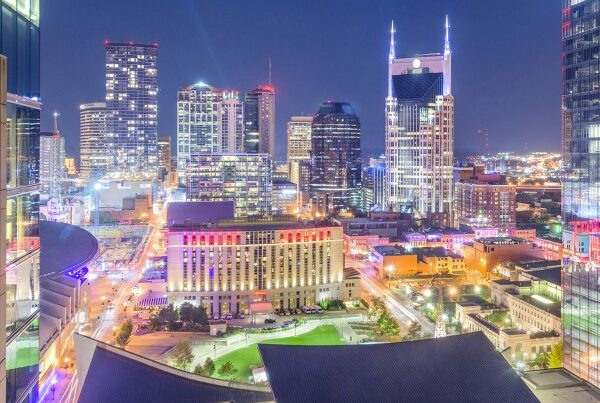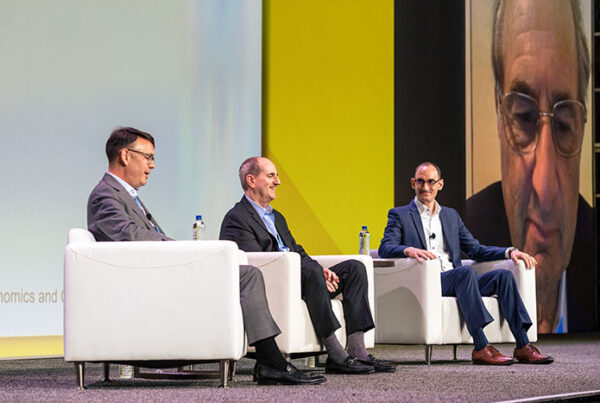The pandemic is a bit like jury duty: no one quite knows just how long it’s going to last.
That analogy set the stage Tuesday morning for a panel discussion titled “Economic Outlook and What it Means for Real Estate”—a session at the first in-person ULI Fall Meeting since the start of the pandemic more than 18 months ago.
One reason many economic forecasts have missed the mark is that forecasters have been trying to jam the downturn caused by the pandemic into traditional “normal” business cycle models. However, this is by no means a normal event, Austan Goolsbee, the Robert P. Gwinn Professor of Economics at the University of Chicago’s Booth School of Business, told a crowd of over 3,000 real estate leaders at McCormick Place Convention Center in Chicago. The pandemic created a totally different downturn, and the number-one rule of “virus economics” centers on getting control of the virus, he said.
As vaccination levels continue to rise, questions related to the economy and the outlook for commercial real estate center on which impacts from the virus will be temporary and which could end up being permanent. Trends underway before 2020, such as online shopping, were accelerated by the pandemic and are here to stay. Whether other changes in the real estate industry are permanent is less certain, such as whether people are going to work from home forever, and whether people will move out of urban centers.
“If you look at the urbanization rate in the United States—or in all rich countries—from the time of the Hamilton musical in 1789 to today, in every census of the United States the urbanization rate has gotten higher because we are more productive when we are together,” Goolsbee said.
Yet the slow return to the workplace continues to create uncertainty for the office sector, as well as challenges for the restaurants, retailers, and service businesses that depend on the foot traffic from the daytime population of workers. Office tenants are paying rents but there is a lingering fear of roll-down rents, noted session moderator Constance Moore, former president and chief executive officer of BRE Properties and a ULI trustee and governor.
“Our view is that longer term, when people do finally realize that creative combustion that comes with being in person and finding that maybe their careers are lagging others—that will ultimately create its own momentum for coming back,” said Roy March, chief executive officer of Eastdil Secured and program panelist.
Although the pandemic has had a varied impact on different property sectors, a tremendous amount of capital still flows into commercial real estate. That investor demand is being driven by the search for yield in a low-yield environment, particularly among pension funds, insurance companies, and sovereign wealth funds that are dependent on a certain rate of return. Investors are continuing to find core returns for well-leased assets that are generating an internal rate of return of 5.75 to 6 percent today, which is still favorable compared with a 10-year Treasury rate at 1.6 percent, noted March. So, commercial real estate investment looks fairly positive in terms of good yields, as well as in relative value and as a hedge against inflation, he added.
As for different property types, growth expectations remain strong for multifamily housing, data centers, and life sciences facilities. “Logistics has been on fire, and with supply-chain issues it may even add to that fervor because you’re going to go from ‘just in time’ to perhaps ‘just in case,’” said March. The retail and hospitality sectors have been on a slower path of recovery, but many sectors—such as open-air retail centers, strip centers, limited-service hotels, and resorts—are recovering and seeing a return of pre-pandemic pricing, he said.
Inflation remains a near-term hurdle. However, Goolsbee expects inflation to be temporary and more concentrated in certain types of products or materials, particularly those affected by supply-chain disruption or spikes in demand due to the virus. It likely will be a bumpy ride for the next six to 12 months, especially for certain products that are in short supply. The good news is that the outlook is not for 1970s-era levels of long-term, persistent inflation, he said.
“Overall, we’re in an environment where there is politicization of everything,” Goolsbee added. “That said, the economy continues to chug along on its own.”

